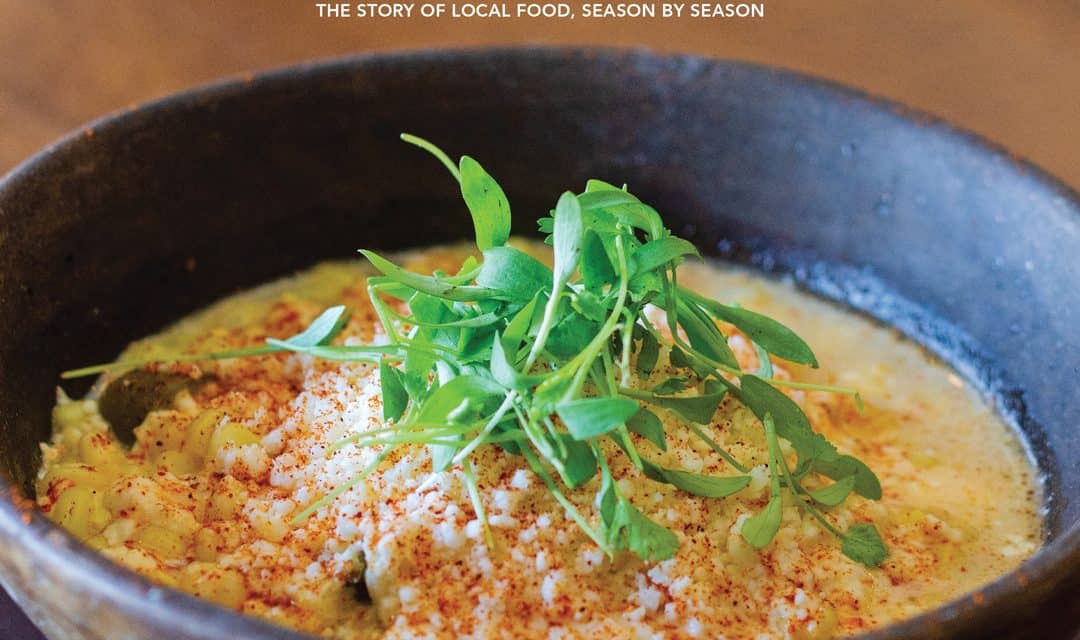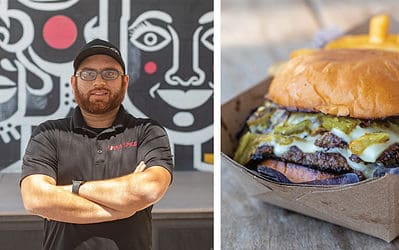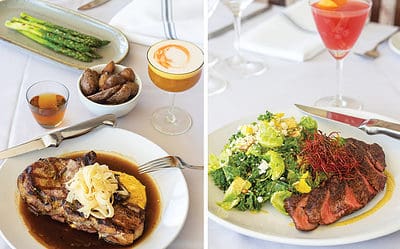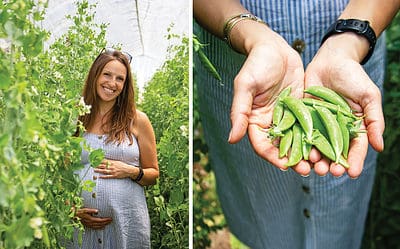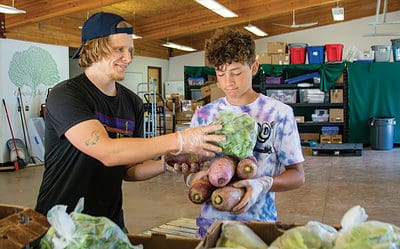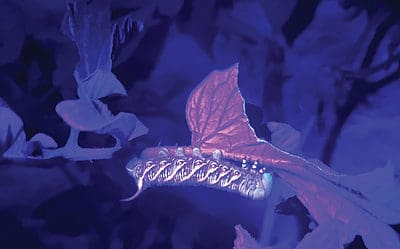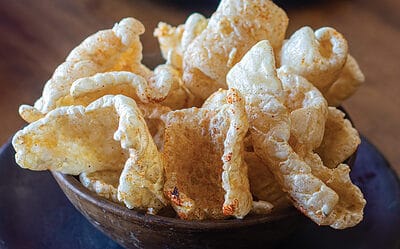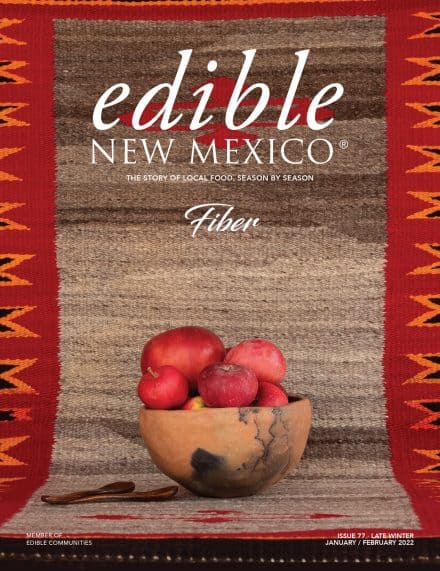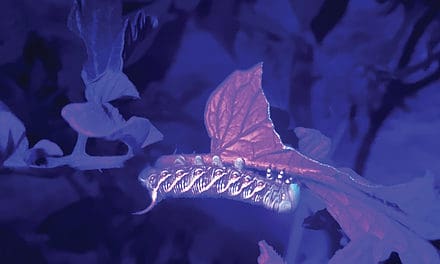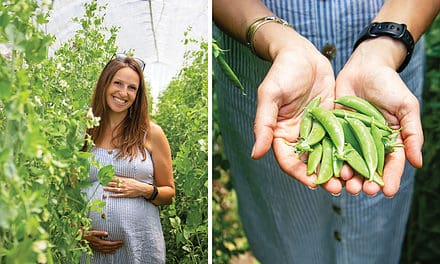The borderlands we inhabit are not demarcated neatly by lines on maps. They have long been a place of movement, a place of mixing, a place of deep roots. They are a homeplace and a center, and central to this homeplace is food. This issue of edible offers a small testament to the ways food roots us, even as it crosses, as it always has, unlegislatable terrain.
Whatever your position in relation to the borderlands, we hope these stories deepen your thinking on the tapestry of footsteps and foodways that connect us.

“To those who would legislate and erect walls and borders, our tracks and paths are long here, and they will remain,” declares Denise Chávez in these pages. “Footsteps twenty-three thousand years old have been found and documented at nearby White Sands, New Mexico, and so the migratory travelers through El Paso del Norte will continue to seek their homeland.”
The borderlands we inhabit are not demarcated neatly by lines on maps. They have long been a place of movement, a place of mixing, a place of deep roots. They are a homeplace and a center, and central to this homeplace is food. This issue of edible offers a small testament to the ways food roots us, even as it crosses, as it always has, unlegislatable terrain.
We follow the tracks of the recovering Gould’s turkey across our state’s bootheel and northern Chihuahua; we learn how to make bitter liqueurs at a gathering near the headwaters of the Rio Grande, across our state’s northern border; and we explore a promising food hub linking farmers with markets throughout southwestern New Mexico. We talk blue corn bourbon and agave spirits with a Las Cruces distiller and visit a seafood restaurant in Juárez whose chef and bartender have toured eastern Europe playing heavy metal. Not least, guided by Chávez and her ties to the region, we trace the stories behind El Paso’s famed Elemi.
Whatever your position in relation to the borderlands, we hope these stories deepen your thinking on the tapestry of footsteps and foodways that connect us.
DIY Bitters
This edition of Cooking Fresh celebrates the versatility of DIY bitters.
DIY Vermouth
This edition of Cooking Fresh celebrates the versatility of DIY bitters that can be added to classic cocktails. This vermouth recipe uses an array of fragrant plants and spices, including juniper berries, sage, and cardamom, steeped in wine and vodka. Enjoy in a manhattan or martini—or in any beverage that would benefit from this floral liqueur.
DIY Amaro
Amaro is traditionally served in Italy after a meal as a digestif, and is typically made by infusing an alcohol like brandy with a blend of herbs, roots, flowers, and spices.
Tikka Spice Food Truck
Basit Gauba explains how the success of a single dish, the bun kabab, turned Tikka Spice from a pop-up into a full-time business based in Albuquerque.
Dru Ruebush, Radish & Rye
Dru Ruebush of Radish & Rye is the 2022 Local Hero for Chef, Santa Fe.
Squash Blossom Local Food
Squash Blossom Local Food is the 2022 Local Hero for Innovator: Food Justice.
Planty Sweet
Albuquerque’s Planty Sweet harnesses the bounty of seasonal New Mexico ingredients and hallmark Asian flavors to create beautifully crafted cakes.
Building a Better Remote Food System
In “Building a Better Remote Food System,” Jennifer C. Olson highlights the work of Frontier Food Hub in Silver City.
Cruces or Die: Sipping Neat with Dry Point Distillers
Briana Olson takes a trip south to Dry Point Distillers to learn about the origins and ethos of Las Cruces’s only distillery.
On the Road to Recovery: Gould’s Turkey
In “On the Road to Recovery: Gould’s Turkey,” Katie DeLorenzo tells the story of how these native wild turkeys have reestablished a healthy population in New Mexico after being on the state threatened species list for almost four decades.
Seafood & Metal: A Perfect Match from Juárez
Israel Holtzeimer explores the cuisine at Costa Brava, a seafood restaurant in downtown Juárez helmed by Chef Alfredo Rocha, frontman of the heavy metal band Orcus O Dis.
Harvesting Hornworms
In this edition of Touch and Grow, Marisa Thompson shares strategies for identifying these ubiquitous nightshade pests (hornworms) and giving them a more suitable environment to munch in.
Remembering The Chicharrones
In “Remembering the Chicharrones,” celebrated Las Cruces author Denise Chávez explores the history and inspiration behind the cuisine at Elemi restaurant in El Paso.

